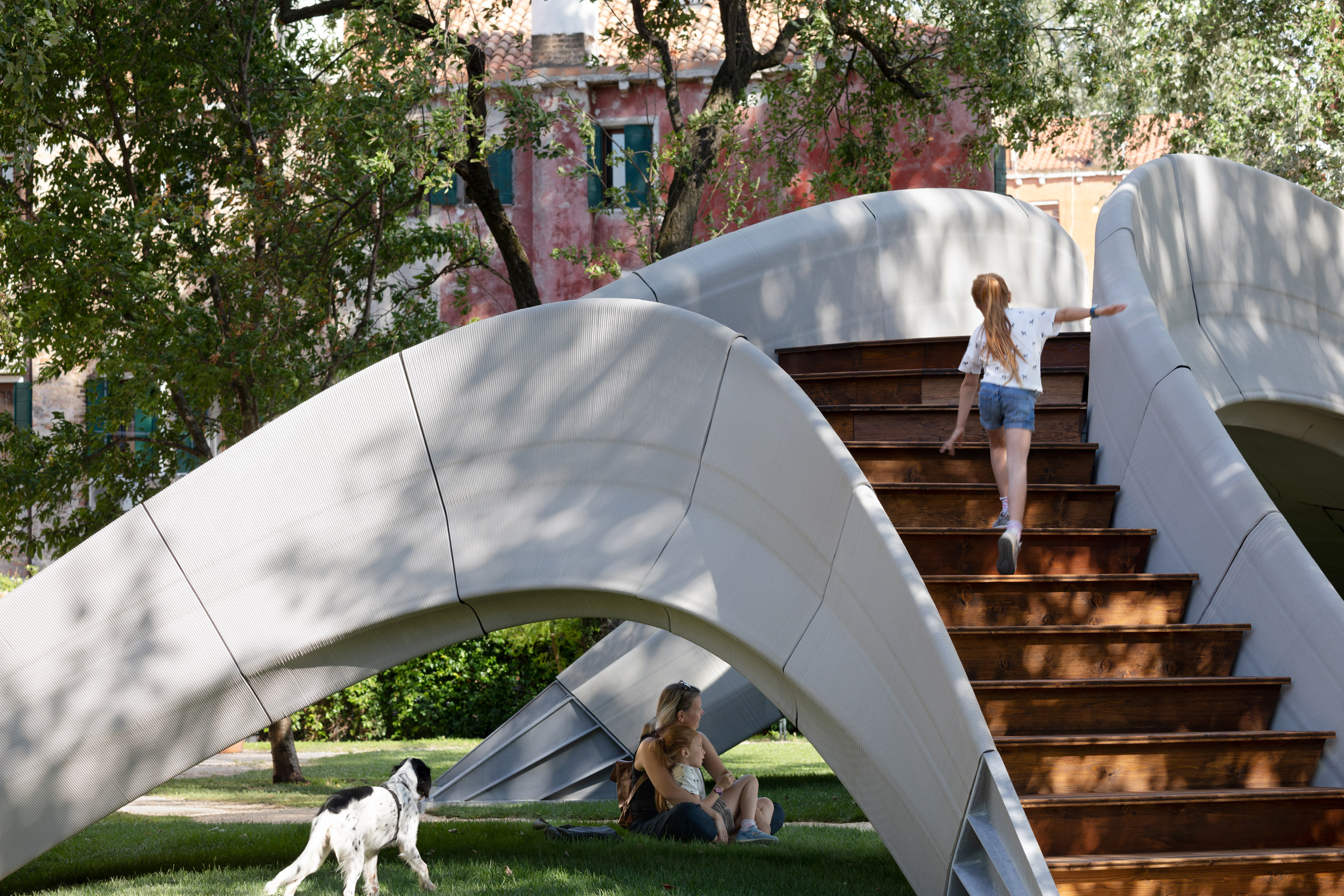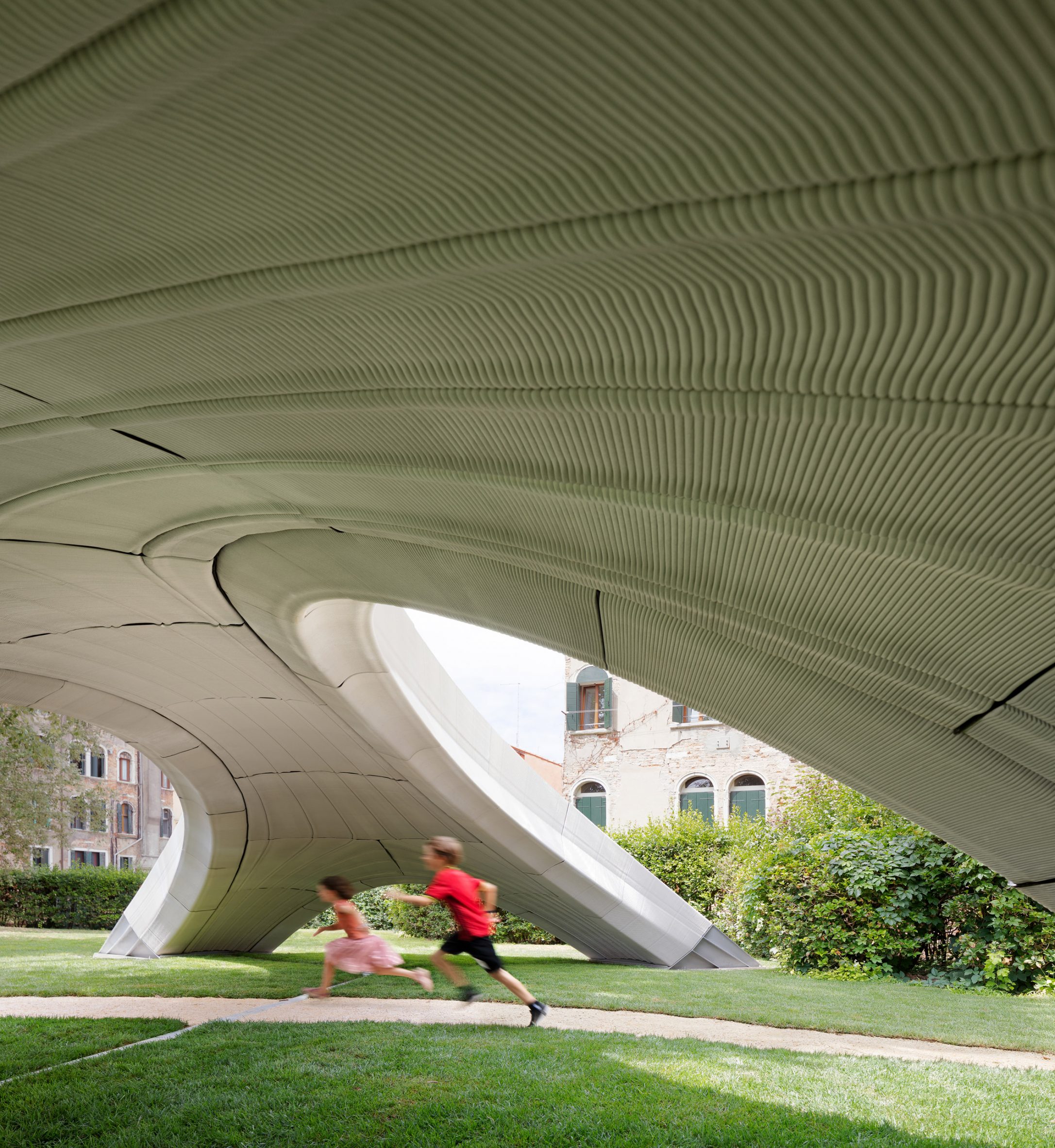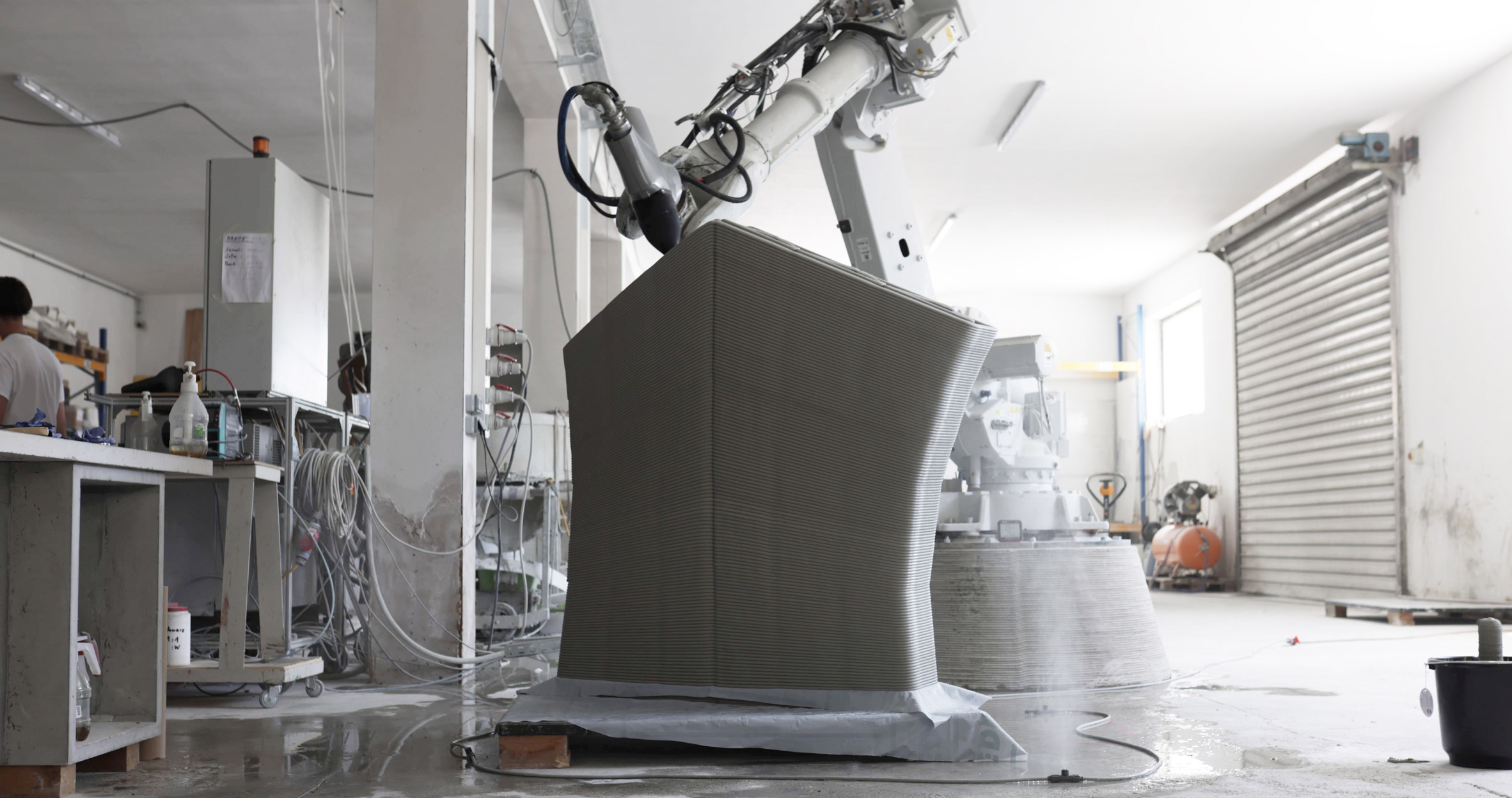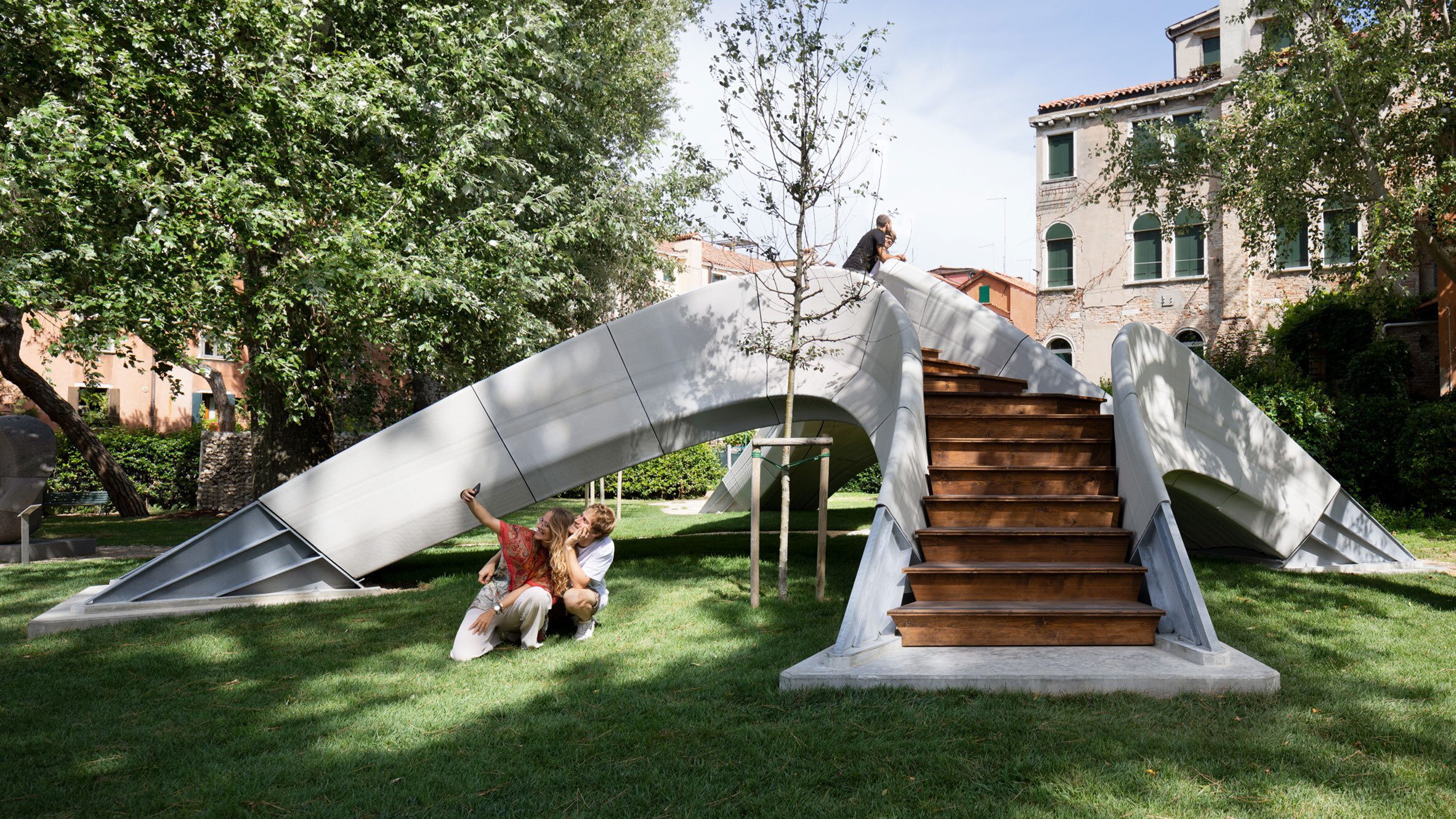
Holcim CEO Jan Jenisch explains how 3D-printed concrete bridge Striatus aims to showcase how to build with less material without compromising performance in this video Dezeen produced for the building materials company.
Striatus is a 16-metre-long 3D-printed concrete footbridge built by Block Research Group at Swiss university ETH Zurich and the Computation and Design Group at Zaha Hadid Architects (ZHA CODE), in collaboration with concrete 3D printing specialists incremental3D.
The project was made possible by Holcim, which created a custom-made proprietary concrete ink that was used to print the bridge.

The project is intended to demonstrate a new way of building with concrete that uses far less material than traditional methods and can be disassembled and recycled.
Striatus showcases "concrete at its best"
"Striatus establishes a new language for concrete that is digital, environmentally advanced and circular by design," Jenisch says in the video, which was filmed in Venice and at Holcim's headquarters in Zug, Switzerland.
"It uses concrete at its best, with a minimum amount of material for maximum strength."

The arched bridge is constructed from 53 hollow blocks, each printed from 500 layers of concrete, which are held in place solely through compression, without any reinforcement or binders.
According to the designers, this approach has a number of benefits over traditional construction methods.
3D printing uses "up to 70 per cent" less material
Because the blocks that make up the bridge are hollow, far less material is used.
"3D concrete printing can reduce up to 70 per cent of materials with no compromise on aesthetics or performance," Jenisch said.
"It opens up an infinite range of possibilities to build more with less, from complex infrastructure projects to affordable housing."

Unlike most 3D-printing technologies, which build up an object through a series of flat, horizontal layers, Striatus was printed using a six-axis robotic arm with a special printing head that can print non-uniform, non-parallel layers.
This enabled the printing of arched components that can be used structurally without any reinforcement.
Bridge can be reused and recycled
The lack of any metal or adhesives to reinforce the bridge means that the bridge can be easily disassembled and reused.
Also, because the entire structure of the bridge is made of concrete, it can be ground down and recycled.
"It holds together solely through compression, with no reinforcements, no glues and no binder, " Jenisch said.
"With its smart design, Striatus sets a new blueprint for the future of sustainable building, minimum material use, low environmental footprint and circularity."

Striatus is currently on show at Giardini della Marinaressa, managed by the European Cultural Center in Venice, Italy, to coincide with the Venice Architecture Biennale.
"I'm proud that we are part of the Striatus project with our custom-made concrete ink," Jenisch said. "I hope you will have a chance to visit Striatus at Venice."
Recently, Dezeen teamed up with Holcim to host a live talk that explained how the Striatus bridge was conceived, designed and constructed, and explored the implications that the project has for the future of construction. Watch the talk here.
Photography is by Naaro.
Partnership content
Dezeen produced this video for Holcim as part of a partnership. Find out more about Dezeen's partnership content here.
The post Striatus 3D-printed bridge "establishes a new language for concrete" says Holcim CEO appeared first on Dezeen.

No comments:
Post a Comment